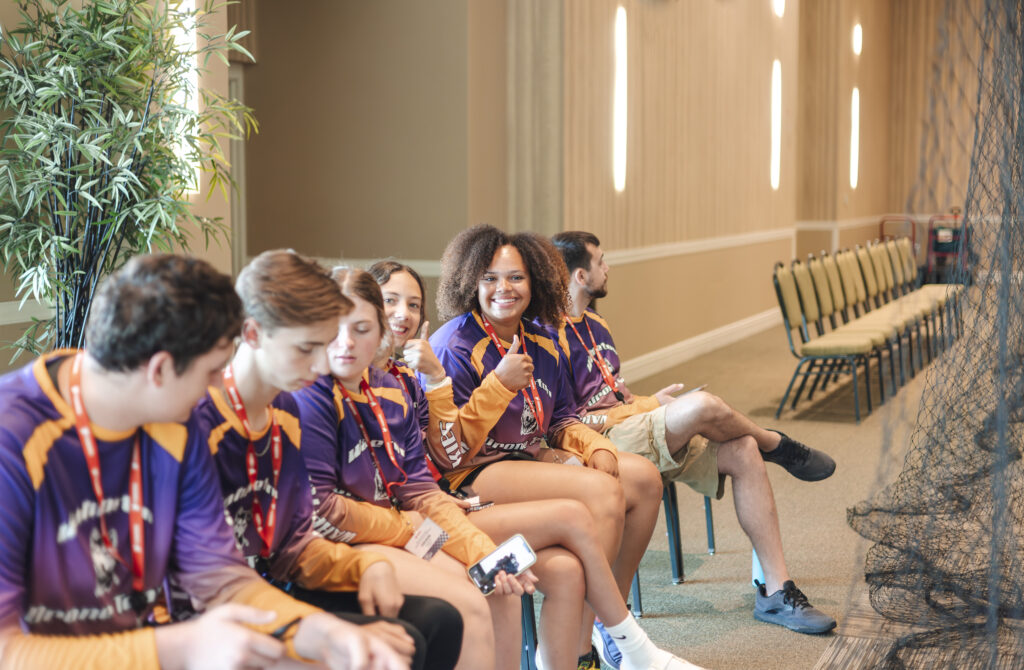Defenders of the Digital Domain

In today’s rapidly advancing digital age, technology plays an integral role in our students’ lives, shaping how they learn, communicate, and engage with the world. As parents, school faculty, and students, it is essential to be well-informed about digital safety and online etiquette to ensure a safe and positive online experience. While the tech landscape may seem daunting for some of us who didn’t grow up in such a fast-evolving industry, this blog post aims to provide valuable insights, tips, and strategies that everyone can relate to and find useful. Let’s work together to promote safety, honesty, and responsible digital citizenship.
- Embrace Open Communication:
Building a foundation of trust and open communication is key to supporting your student’s digital safety journey. Encourage open dialogue with your children or students about their online experiences, concerns, and interests. Create a safe space where they feel comfortable sharing their challenges and successes, ensuring that they know you’re there to support them, both in the digital world and beyond.
- Stay Informed about Online Platforms and Apps:
As parents and school faculty, it’s essential to familiarize ourselves with the various social media platforms and apps our students use. Take the time to explore these platforms and understand the features they offer, allowing you to be better equipped to guide your students and address any potential safety concerns. You can research most used platforms to feel up to date and confident in what your kids are using. Make your own account to get a better understanding.
- Set Clear Boundaries and Guidelines:
Establishing clear boundaries and guidelines for digital device usage is crucial in promoting a healthy balance between online and offline activities. Work together with your students to set time limits for screen usage, especially during study hours and bedtime, ensuring that they prioritize their academic responsibilities and get enough rest. Many students give an immediate eye roll when they hear screen time, but it is your job to help enforce the boundaries and help them understand why they are in place. Remember, these boundaries will help them when they transition to living on their own!
- Lead by Example:
As adults in their lives, we have a responsibility to lead by example when it comes to digital safety and online etiquette. Demonstrate positive online behavior, such as respectful communication, responsible sharing, and critical thinking. Don’t be afraid to share your mistake to help students understand the impact technology can have- good or bad. Our actions can significantly influence how our students perceive and interact with the digital world.
- Educate About Cybersecurity:
Equip your students with the knowledge they need to stay safe online. Teach them about the importance of strong passwords, the dangers of sharing personal information with strangers, and how to recognize and report suspicious or harmful content. Safe password practice includes having a unique password unrelated to your personal information so it is harder to guess. When accounts and information get’s hacked, there is no going back to retrieve that information and may lead to account deactivation all together. Always do research on new sites to make sure they have powerful privacy policies and don’t sell data. If you notice bullying, trolling, or predatory behavior, always bring it to a trusted adult and report the instance if necessary. Again, always better safe than sorry in the digital age. Empowering the youth with these skills will enhance their confidence in navigating the digital landscape responsibly and aid them as they grow up.
- Respect Each Other’s Digital Footprint:
Remind students about the permanence of their digital footprint. Encourage them to think twice before posting or sharing content and consider how their actions may impact their reputation and future opportunities. Be prepared for anything you share online to be there forever. For example, Fenworks has removed our first ever logo created in 2020 from all platforms after rebranding but if you give us a google, you are still able to find that logo. That may be hard to conceptualize as a teen, but it is much better to be safe than have it haunt you later in life. Additionally, emphasize the significance of respecting others’ privacy and consent in their online interactions.
Promoting digital safety and online etiquette is a collective effort that involves parents, school faculty, and students working together. By embracing open communication, staying informed, and setting clear boundaries, we can foster a safe and positive digital environment for our students to thrive in. Remember, the digital world offers incredible opportunities for learning, creativity, and connection, but it’s essential to approach it with awareness, responsibility, and respect. Let’s journey together in supporting our student’s digital safety and empowering them to be responsible digital citizens.
Related Posts